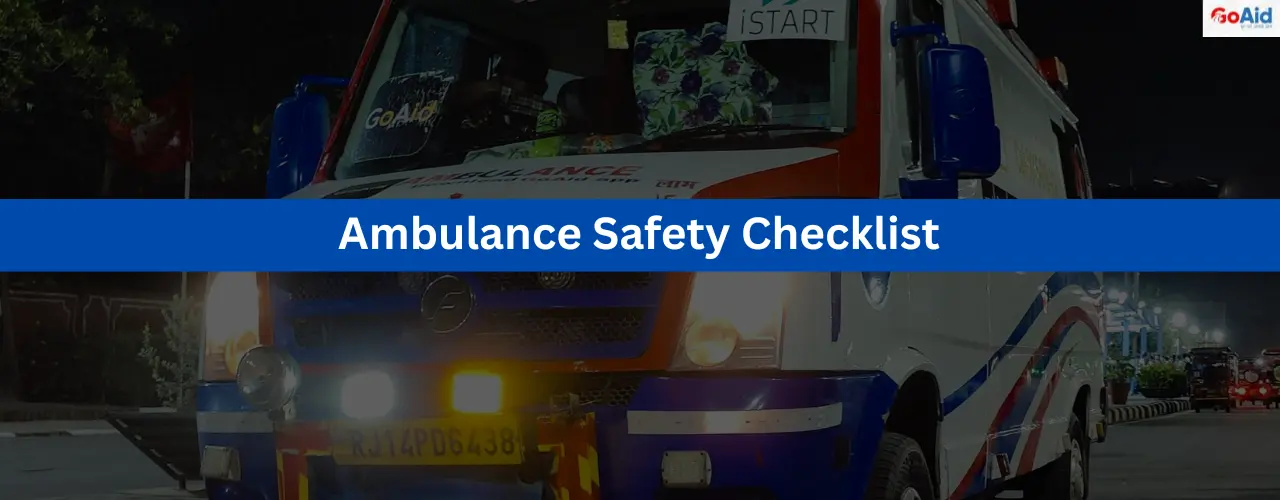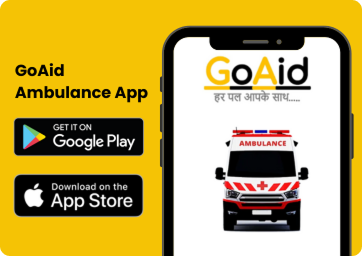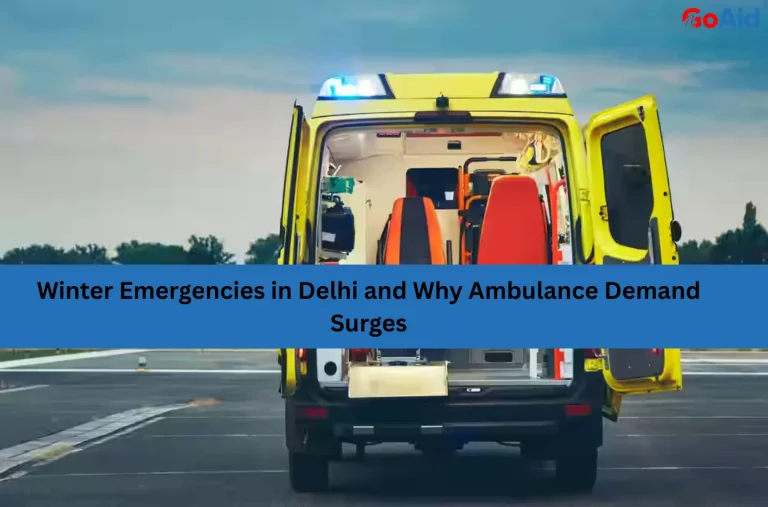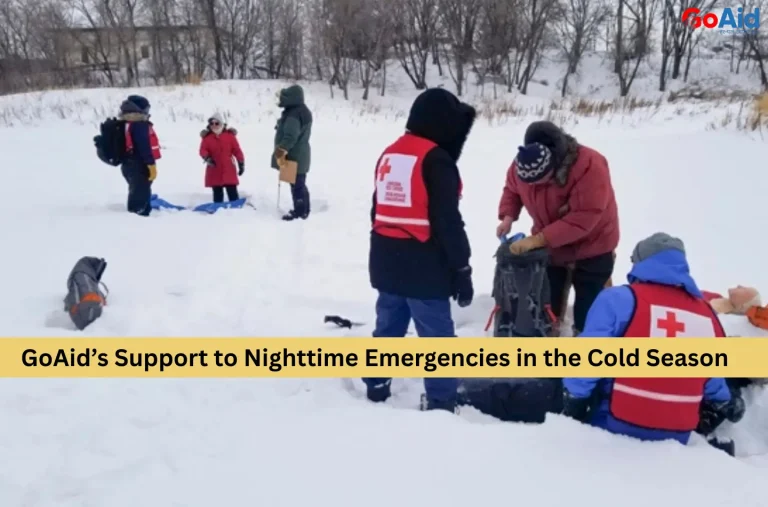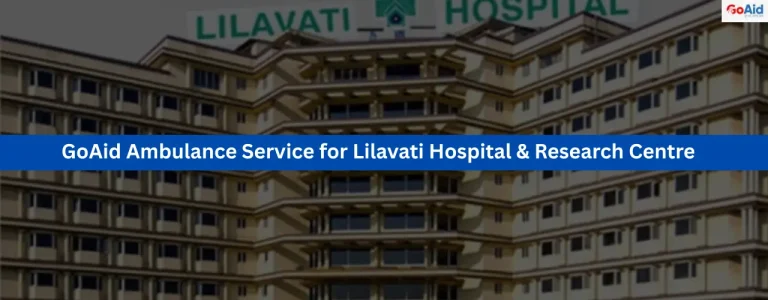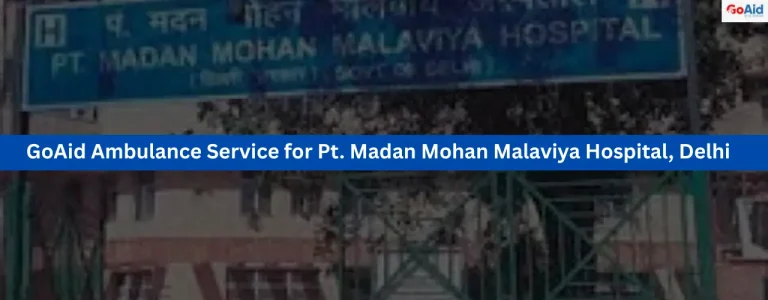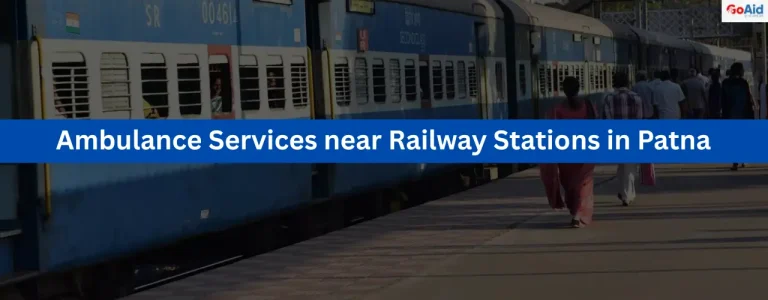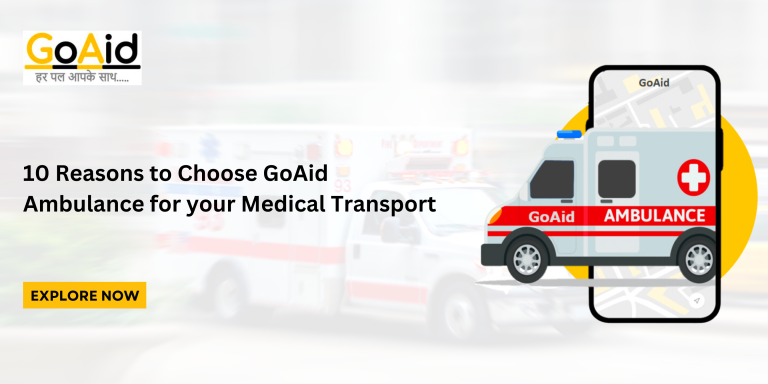Before trusting any ambulance service, every patient and their family should be aware of one essential thing: ambulance safety. Often in emergencies, we focus only on speed. But is the vehicle safe, equipped, and reliable? ThatŌĆÖs where a proper ambulance safety checklist becomes crucial.
Knowing what to check before using an ambulance can protect lives. Still, many ignore the importance of a simple ambulance inspection checklist. ThatŌĆÖs why in this blog, weŌĆÖve shared a complete checklist for ambulance safety, explained its importance, and how trusted providers like GoAid Ambulance Service maintain the best ambulance in India with top safety standards. Want to stay informed and prepared? Then read till the end.
LetŌĆÖs begin.
Why Safety Checklist Important Before Using an Ambulance?
Before hiring an ambulance, following a safety checklist ensures patient safety, service reliability, and proper medical care during emergencies. It minimizes risks and assures you choose the right ambulance service.
1. Ensures Patient Safety
A checklist ensures the ambulance has life-saving tools, trained staff, and readiness to handle medical emergencies, which is vital for maintaining overall patient safety.
2. Verifies Ambulance Readiness
The Ambulance Safety Checklist confirms vehicle condition, fuel level, and operational status. With it, we ensure it can respond promptly and function reliably throughout the emergency.
3. Check Medical Equipment Availability
Ensures that crucial equipment like oxygen, ventilators, and monitors is available and functional. This is essential for emergency response and patient safety.
4. Assess Staff Competency
A checklist evaluates whether the ambulance has qualified paramedics, enhancing the quality of care provided during transit or on-site medical emergencies.
5. Confirms Infection Control
The Ambulance Inspection Checklist verifies cleanliness, sanitized tools, and PPE availability to reduce infection risks, especially in critical or COVID-sensitive situations.
6. Reduces Human Errors
Using a Checklist for Ambulance Safety standardizes procedures and reduces the chances of mistakes, improving care and building trust in ambulance services.
Complete Ambulance Safety Checklist
A comprehensive Ambulance Safety Checklist ensures every ambulance is well-equipped, hygienic, fully functional, and capable of delivering emergency care. Here are 10 essentials to verify before use:
1. Vehicle Condition Check
Ensure brakes, tires, headlights, sirens, and fuel levels are in good condition to avoid breakdowns during critical emergency transport.
2. Oxygen Supply Availability
Check that oxygen cylinders are full and the delivery system is functional to support respiratory emergencies or trauma patients in critical condition.
3. Stretcher & Immobilization Equipment
The ambulance must have a secured stretcher, spine board, and immobilization tools to safely transport injured or immobile patients.
4. Defibrillator Readiness
Check the defibrillator is present, charged, and functional, essential for cardiac patients or sudden cardiac arrest scenarios.
5. Ventilator & Suction Machine Check
Ensure a working ventilator and suction device are available for patients needing respiratory support or airway clearance.
6. First Aid & Trauma Kit
A complete trauma kit should be onboard with bandages, gloves, antiseptics, and splints to manage injuries en route.
7. Qualified Paramedics on Duty
Confirm that trained, certified paramedics or EMTs are present to handle various medical situations professionally.
8. Communication System Functionality
Verify that two-way radios or mobile devices are functional to maintain contact with hospitals or control rooms.
9. Sanitization & Cleanliness Check
Ensure the ambulance is clean and sanitized after each use to prevent infections and maintain hygiene standards.
10. Proper Documentation & Logbooks
The ambulance should maintain updated logs of service history, equipment checks, and incident reports for accountability and regulation compliance.
Also Read: Top Mistakes People Make During Emergency Ambulance Booking
Benefits of Ambulance Safety Checklists
Using an Ambulance Safety Checklist brings immense advantages in improving the reliability and responsiveness of ambulance services. It helps ensure that all essential checks, like vehicle functionality, staff readiness, medical equipment availability, and hygiene, are verified before the ambulance is dispatched.┬Ā
This reduces delays, prevents mishandling during critical situations, and assures better patient safety. Moreover, checklists aid in regular audits and help maintain service standards, especially for reputed providers like GoAid Ambulance Service. These lists build trust with patients and families, showing that every step has been taken for their well-being.
Also, for hospitals, societies, and corporate clients, a verified ambulance inspection checklist streamlines emergency planning. In summary, safety checklists are not just paperworkŌĆötheyŌĆÖre life-saving tools that ensure you receive care from the best ambulance in India when it matters most.
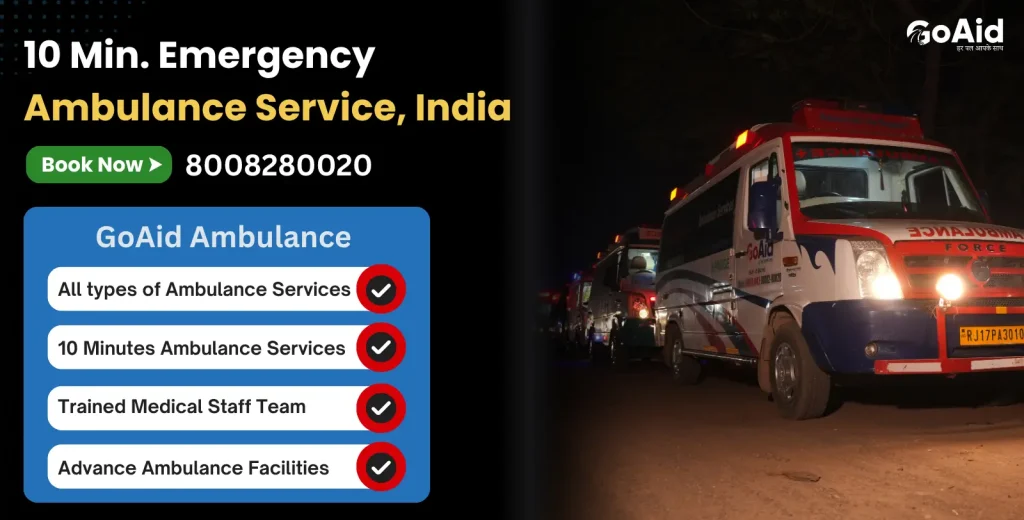
Conclusion to Ambulance Safety Checklist
In conclusion, we have provided all the essential details about the Ambulance Safety Checklist, its role in maintaining patient safety, and the benefits of using an accurate ambulance inspection checklist. Whether itŌĆÖs a minor emergency or a life-threatening situation, checking an ambulanceŌĆÖs readiness is vital.
A proper checklist for ambulance safety reduces risks, ensures preparedness, and offers peace of mind to patients and families. Choosing a reputed ambulance service like GoAid Ambulance Service, which follows strict safety protocols, guarantees the best care. If you have anything else to ask, feel free to drop your question in the comment box below.
FAQs related to Ambulance Safety Checklist
Question-1: What is an Ambulance Safety Checklist?
Answer: ItŌĆÖs a list of essential safety and operational items used to assess the readiness of an ambulance service before dispatch for emergencies.
Question-2: Why is the Ambulance Inspection Checklist important?
Answer: The ambulance inspection checklist ensures all equipment is functional, the vehicle is fit, and trained staff is readyŌĆöboosting patient safety in emergencies.
Question-3: How does a checklist help in patient safety?
Answer: A checklist for ambulance safety helps avoid errors, ensures equipment availability, and provides timely careŌĆöcritical for patient safety and successful treatment.
Question-4: Who should use the ambulance safety checklist?
Answer: Ambulance operators, hospital staff, and even families booking emergency care should verify the checklist for reliable and safe ambulance service.
Question-5: What items are included in a typical ambulance safety checklist?
Answer: Items include oxygen supply, defibrillators, ventilators, clean stretchers, communication tools, and paramedic availability for safe and effective ambulance service.
Question-6: Are these safety checklists mandatory in India?
Answer: While not always legally enforced, reputed providers like GoAid Ambulance Service follow safety checklists as a standard for delivering trusted care.
Question-7: What are some quick ambulance tips for emergencies?
Answer: Always check ambulance availability, verify trained staff, inspect hygiene, and confirm equipment functionalityŌĆöthese ambulance tips can save lives.
Question-8: How often should ambulance safety be checked?
Answer: Daily checks are ideal, especially for active units. Regular inspections ensure consistent readiness and help maintain the best ambulance in India standards.
Question-9: Is GoAid a reliable ambulance service?
Answer: Yes, GoAid Ambulance Service is among IndiaŌĆÖs most trusted providers, known for fast response, trained staff, and strict adherence to safety protocols.
Question-10: Can patients request a safety-checked ambulance?
Answer: Absolutely. Patients and families can request safety-verified ambulances from top services like GoAid Ambulance Service to ensure quality and patient safety.

